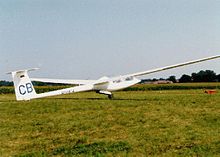

 | |
| Company type | Non-profit |
|---|---|
| Genre | Aviation research |
| Founded | 1920 |
| Headquarters | , |
| Website | akaflieg-berlin |
Akaflieg Berlin is one of around thirteen flying groups, or Akaflieg, currently attached to German universities. Akaflieg Berlin, is the abbreviation of Akademische Fliegergruppe Berlin e.V. (Academic Aviator Group Berlin),[1] a group of students enrolled at several Berlin universities, though they are mainly from TU Berlin, who are involved with the development and the design of gliders, as well as research in aerodynamics. Founded in 1920 Akaflieg Berlin is one of the oldest gliding clubs in Germany, flying their gliders from Kammermark airfield near Pritzwalk, which they share with the AFV Berlin (Akademische Fliegervereinigung Berlin e.V.), which mainly consists of former members of Akaflieg Berlin, jokingly referred to as the “elderly ladies and gentlemen”. As at 2007/2008 Akaflieg Berlin was the executive group of the Idaflieg (Interessengemeinschaft deutscher akademischer Fliegergruppen e.V.), the controlling body for all German university flying groups.[2]
Akaflieg Berlin currently has three two-seaters: a Grob G-103 Twin III and two of its own designs, the Akaflieg Berlin B12 and the Akaflieg Berlin B13. It further operates a Schempp-Hirth Discus and a Schleicher ASW 24.
Akaflieg Berlin has undertaken the following development projects:-




This section is empty. You can help by adding to it. (January 2011)
|
|
Akaflieg Berlin aircraft
| |
|---|---|
| By type number |
|
| By name |
|
| Authority control databases: National |
|
|---|